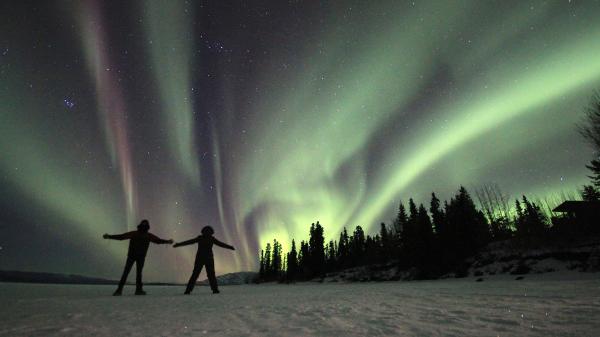
Northern lights

Awe-rora Territory: Give your travels a glow-up
Astro Tourism is now officially a thing! But with our clear, dark night skies and dancing northern lights, we’ve always been on trend. Aurora you ready for this?
The Yukon is home to nature’s most coveted light show. The aurora borealis are visible from mid-August to mid-April. Ideal viewing conditions consist of dark and clear nights (preferably moonless) with a magic window between 10 pm and 3 am.

Solar Cycle 25 marks a roughly 11-year change in the sun’s activity, which has been observed for centuries but was not clearly identified until 1843. During each cycle, levels of solar radiation and ejection of solar material, plus the number of sunspots, solar flares and coronal loops, fluctuate from a period of minimum activity to maximum activity (the “solar max”), and back again. The current solar cycle, number 25, began in December of 2019 and will reach its peak between 2023 and 2026. The uptick in solar activity during the solar max results in more aurora activity, making the current era a particularly good time for aurora viewing vacations.
While the northern lights are often associated with winter, fall in the Yukon is an equally magical time for aurora viewing. From August to October, the darkening skies of the Yukon are illuminated by the vibrant northern lights, set against the stunning backdrop of autumn colours. Go aurora hunting from the ground, fat bike, or even a plane!

Here's what you need to know
The aurora is visible between late August and early April. There are two distinct viewing seasons: Autumn from mid-August to mid-October and Winter from mid-October to early April.
5 tips for northern lights viewing- Best season Mid-August to mid-April
- Best time 10:00pm to 3:00am


